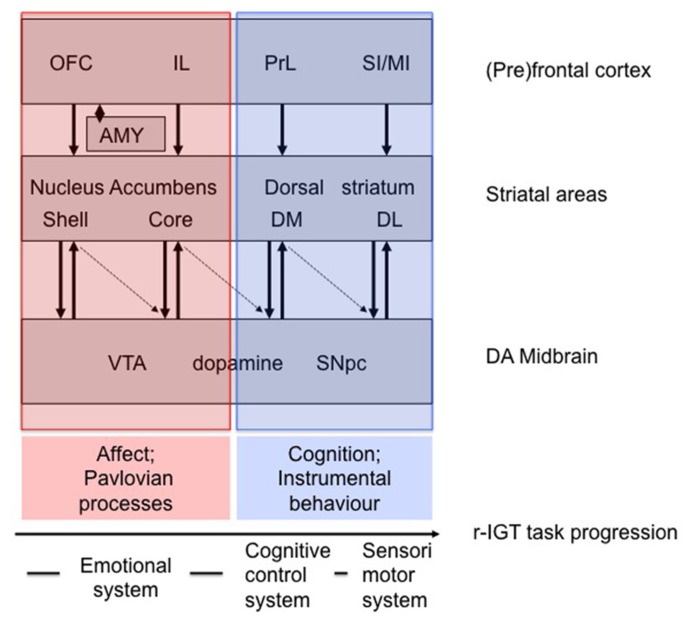FIGURE 2.
Hypothetical neurobehavioral model of task-progression in the r-IGT (Yin and Knowlton, 2006; Yin et al., 2008). It should be noted that the cingulate areas and insular cortex are not included (see New Directions for the r-IGT). Furthermore the subdivisions of the OFC are not shown (see van den Bos et al., 2013b). In transparent red, the emotional system is shown, of which striatal areas are involved in Pavlovian behavior (see Yin et al., 2008): while the shell is involved in immediate (hedonic) responses (stimulus-outcome; (un)conditioned consummatory/hedonic responses), the core is involved in anticipatory/preparatory behavior (stimulus–stimulus relation). In transparent blue, the cognitive control system [dorsomedial (DM) striatum; action-outcome; goal-directed behavior] and sensorimotor/habit system [dorsolateral (DL) striatum; stimulus-response; habit-like behavior], of which striatal areas are involved in instrumental behavior. Thus far, we have not trained animals to the point of showing habitual behavior. Arrows indicate mutual interactions between midbrain dopaminergic areas and striatal areas, while the dotted arrows indicate disinhibition of dopaminergic areas by striatal areas [see Yin and Knowlton (2006) for discussion]. Dopaminergic projections to the prefrontal cortex are not shown. Also the interaction with the serotonergic (5-HT) system is not shown (see for discussion: Homberg et al., 2008; Koot et al., 2012; van den Bos et al., 2013b). Abbreviations: amy, amygdala; OFC, orbitofrontal cortex; IL, infralimbic cortex; PrL, prelimbic cortex; SI/MI, primary and sensory motor cortices; VTA, ventral tegmental area; SNPc, substantia nigra pars compacta.

